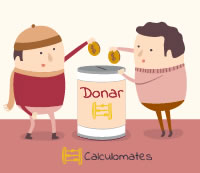Divisors of 358541
Sheet with all the Divisors of 358541
Divisors of 358541
Parity of 358541
358541is an odd number,as it is not divisible by 2
The factors for 358541
The factors for 358541 are all the numbers between -358541 and 358541 , which divide 358541 without leaving any remainder. Since 358541 divided by -358541 is an integer, -358541 is a factor of 358541 .
Since 358541 divided by -358541 is a whole number, -358541 is a factor of 358541
Since 358541 divided by -1 is a whole number, -1 is a factor of 358541
Since 358541 divided by 1 is a whole number, 1 is a factor of 358541
What are the multiples of 358541?
Multiples of 358541 are all integers divisible by 358541 , i.e. the remainder of the full division by 358541 is zero. There are infinite multiples of 358541. The smallest multiples of 358541 are:
0 : in fact, 0 is divisible by any integer, so it is also a multiple of 358541 since 0 × 358541 = 0
358541 : in fact, 358541 is a multiple of itself, since 358541 is divisible by 358541 (it was 358541 / 358541 = 1, so the rest of this division is zero)
717082: in fact, 717082 = 358541 × 2
1075623: in fact, 1075623 = 358541 × 3
1434164: in fact, 1434164 = 358541 × 4
1792705: in fact, 1792705 = 358541 × 5
etc.
Is 358541 a prime number?
It is possible to determine using mathematical techniques whether an integer is prime or not.
for 358541, the answer is: yes, 358541 is a prime number because it only has two different divisors: 1 and itself (358541).
How do you determine if a number is prime?
To know the primality of an integer, we can use several algorithms. The most naive is to try all divisors below the number you want to know if it is prime (in our case 358541). We can already eliminate even numbers bigger than 2 (then 4 , 6 , 8 ...). Besides, we can stop at the square root of the number in question (here 598.783 ). Historically, the Eratosthenes screen (which dates back to Antiquity) uses this technique relatively effectively.
More modern techniques include the Atkin screen, probabilistic tests, or the cyclotomic test.
Numbers about 358541
Previous Numbers: ... 358539, 358540
Next Numbers: 358542, 358543 ...
Prime numbers closer to 358541
Previous prime number: 358531
Next prime number: 358571

Copyright © 2019
